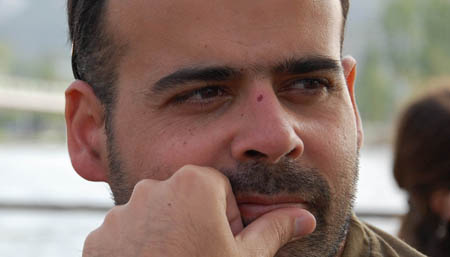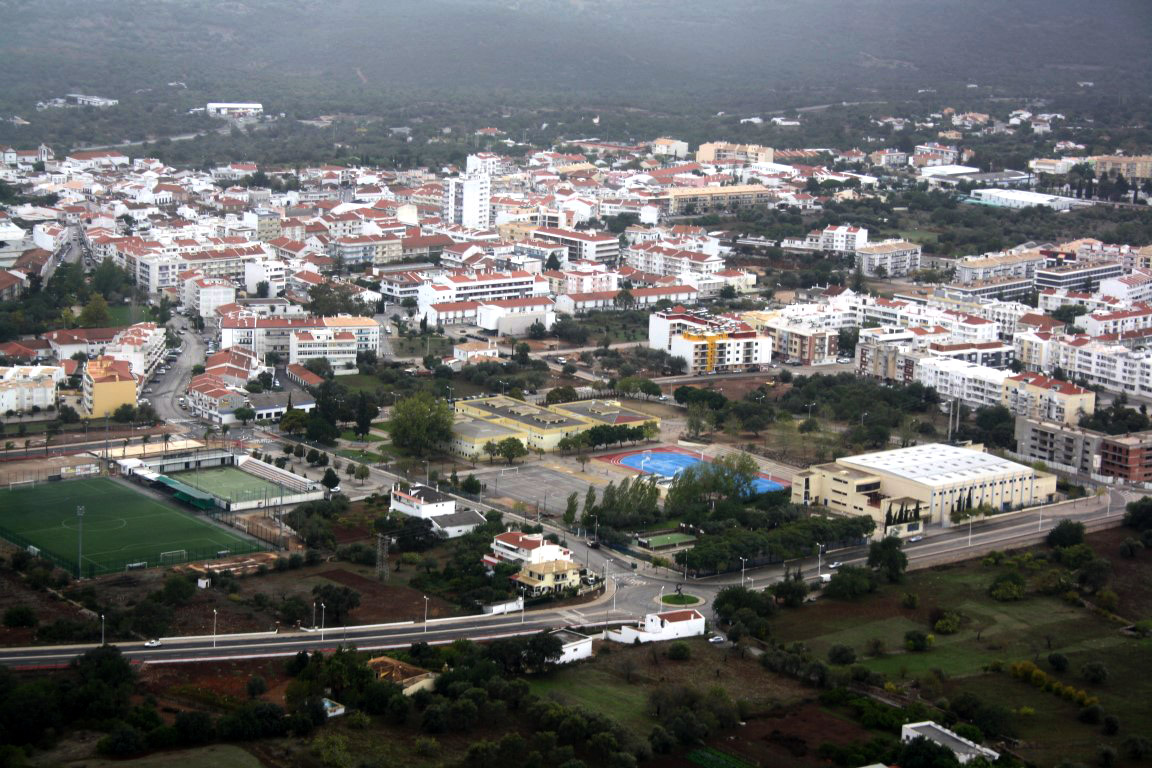Gonçalo Gomes is a landscape architect, president of the Al-Portel Association and lives in the municipality of São Brás de Alportel, which he considers to be «close to everything, but still far from the big mess, maintaining a wonderful peace of mind».
But not everything is “excellent” in a municipality that Gonçalo Gomes says has as its main problems “the lack of employment and economic activities that keep people, without being in a dorm room, and open perspectives for a future here”.
Based on the data provided by Pordata and summarized in the infographic we published above, the Sul Informação asked the landscape architect and association leader to draw a portrait of the municipality of São Brás de Alportel, where he resides.
Gonçalo Gomes says that, in the last decade, at the demographic and business level, there were no «significant changes», but «there were undoubtedly important changes».
At the demographic level, Gonçalo Gomes makes “a cross-reading between the data from Pordata and those from the 2011 Censuses. , there was practically no change, except for a very slight reduction, in the order of 6%, with the demographic pyramid maintaining its structure, in line with regional and national values».
According to Gonçalo Gomes, «this reveals to us that, outside the period of tree real estate, there has not been an ability to captivate new residents. This fact is curious if we think about the evolution of one of the main advantages of São Brás compared to neighboring municipalities, which is the cheaper construction price per square meter».

For the president of Al-Portel, «this issue is certainly not alien to another one, the business dynamic, which is fragile, with the lack of employment being a reality in the municipality. Hence, a very significant part of the employed resident population, I would venture to say about 50%, works in other municipalities, to which is added a real unemployment rate that fluctuates between 8 and 12%, this rate being strongly influenced, as is the case in the whole Algarve, for the peak season of tourism».
In economic terms, «the county's activities are almost exclusively concentrated in the tertiary sector and, within this, mostly in retail trade, structured in small stores. The secondary sector has already played an important role, mainly through the cork industry, the stone extraction and processing industry and civil construction. However, whether due to competition from large economic groups in the first, or the almost total closure of the second, or the crisis in the third, today it is also in sharp regression».
The primary sector, on the other hand, «has no expression, practically living off the coarse and resistance of the elderly and the cork oak forest, and the tertiary-superior, or quaternary, sector does not even make a presence».
Gonçalo Gomes considers that "this originates a mostly unqualified labor supply, with low wages and low added value, completely vulnerable to externalities, that is, to circumstances whose control completely escapes those affected".
As a rule, adds the landscape architect, "when municipalities are the main employer of a municipality, as is the case, this does not greatly support economic and even social and cultural dynamics."
At the level of basic infrastructure networks, “they serve almost the entire population, mainly in terms of water supply. Sanitation through drainage systems and wastewater treatment plants covers about 75% of the population, but considering the classic error of territorial planning, which was the proliferation of building dispersion, it turns out to be an acceptable number».
In terms of accessibility, Gonçalo Gomes says that the municipality is "well served" and with regard to public services and facilities, "with the exception of health, they provide highly efficient responses."

In culture, «there has also been a strong investment, although it has gone through more festivities and occasional events, and not exactly a cultural strategy for the municipality. In any case, S. Brás counts among its cultural spaces with the Museu do Trajo, already a reference, the Calçadinha Romana and associated interpretive center, and also has great archaeological and literary potential to explore, the latter through figures such as Estanco Louro , the illustrious generation of the Passos family or multifaceted figures like Roberto Nobre».
Pordata's data, which can be found in the infographic developed by Sul Informação, “in general, they do not introduce any big surprises. They end up giving a numerical and more detailed expression to a reading that is possible through the daily experience and analysis of the municipality».
For Gonçalo Gomes, living in São Brás de Alportel «is excellent. I usually say that it is the land of Ernst Schumacher's “Small is beautiful”, or a kind of “Cinema Paradise” revisited». The county “still preserves an identity trait that is becoming rarer, and that is precious: that of proximity. I don't say about affections, because this expression has been abused to exhaustion. But life in this community is involving, it is welcoming, there is still the habit of greeting strangers and “relatives” with the same warmth. And this is tremendously valuable».
In relation to problems, Gonçalo Gomes, in addition to the lack of employment and economic activities, highlights "an issue that cuts across the entire region, and that involves health care." For the leader of Al-Portel, in an «inner hub like São Brás de Alportel, in a context of generalized aging of the population, it is unacceptable that, for something more than a simple scratch, people are dragged to the Hospital de Faro, due to under-dimensioning of local equipment'.
The situation of the Center for Physical Medicine and Rehabilitation of the South is also “equally serious”. For Gonçalo Gomes, this is «a fundamental equipment from the point of view of health and also of the local economy, in the premises of the old Vasconcelos Porto sanatorium, which is slow to free itself from an apparently endless soap opera, despite the successive efforts and promises that have been coming. to the public'.
Another issue highlighted is that of the geographic distribution of the population, which “is tremendously unbalanced. The Serra, which covers approximately two thirds of the county, does not even house 5% of the population, which translates into a tremendous depopulation and dehumanization of the landscape, whose mark and character is precisely the presence and human intervention».
Regarding the building, Gonçalo Gomes says that “in addition to the dispersed building, whose burden in terms of construction and maintenance costs of infrastructure networks is tremendous”, there is an “oversizing of the building. Between 2001 and 2011, the real estate stock of São Brás registered an increase in the range of 10 to 20%. However, about 10% of all existing buildings are vacant. In other words, at worst, we have as many empty houses as we've built in the last decade, decade and a half».
In the Historical Center, «deeply depopulated, this issue gains renewed importance», considers Gonçalo Gomes.
In associative terms, «São Brás de Alportel has a rich associative fabric, whose activity is intense. There are numerous associations, covering different areas of interest, from music to sports, where, through the hand of X Dream Blasius, national events have been held, with great success, through social solidarity or civic intervention in the defense of the environment and of cultural heritage, by Al-Portel'.
This associative dynamic has had, for the association leader, «great recognition on the part of official entities, specifically on the part of the local authority, which for years has had a support plan for associations, in which it seeks to cover all municipal associations. Moreover, this plan has been accompanied by a deep involvement of the associations in the promotion of cultural animation in the municipality and in the various community moments that mark the annual calendar».
NOTE: O Sul Informação is publishing a series of 16 articles called “X-Ray of the Municipalities”, dedicated to each of the 16 Algarve municipalities.
The infographics, developed by our multimedia journalist Nuno Costa, use statistical data from Pordata.
The people chosen to comment on the data in each of the municipalities are not, as much as possible, linked to political parties and reside, have businesses, work or were born in the municipalities concerned.
Read also
X-ray of the Counties: Faro it is no longer a «dying» city and «it gives pleasure» to live in it
X-Ray of the Municipalities: Portimão needs to «diversify business offer»
X-Ray of the Municipalities: «the word that best sticks to Silves will be “potential”. Whoever grabs it»
X-Ray of the Municipalities: Castro Marim "unfortunately stagnated", but Nature Reserve is reason for hope
X-Ray of the Municipalities: “Quality of Life” in Monchique is not enough to fix young people


















Comments